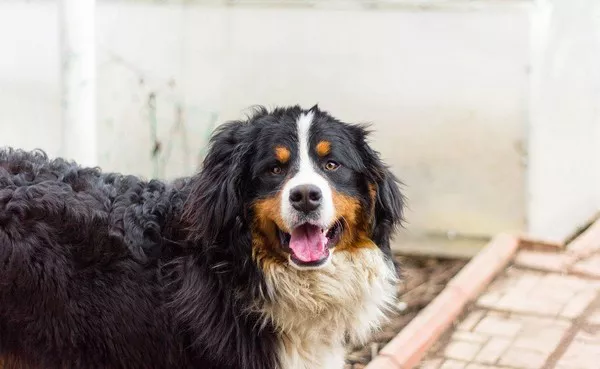The American Foxhound is a breed that boasts a rich history, known for its hunting abilities and friendly demeanor. This article will explore the social characteristics of American Foxhounds, their compatibility with other dogs, and what potential dog owners should consider before bringing an American Foxhound into their home.
Understanding the American Foxhound
History and Origin
The American Foxhound was developed in the United States from various breeds, including the English Foxhound, and has roots that trace back to the colonial period. Early settlers needed a dog that could assist in hunting foxes, and the American Foxhound proved to be an ideal companion. Renowned for their stamina and keen sense of smell, these dogs were used extensively in hunts across America.
Physical Characteristics
American Foxhounds are medium to large dogs, typically weighing between 40 to 65 pounds and standing 21 to 25 inches tall at the shoulder. They possess a muscular build, long legs, and a distinctive coat that comes in various colors, including tri-color (black, white, and tan), red and white, or blue ticked. Their large, floppy ears and expressive eyes add to their friendly appearance.
Temperament
Known for their gentle and easy-going nature, American Foxhounds are sociable and friendly dogs. They tend to be playful, affectionate, and good with children, making them suitable family pets. However, their strong prey drive and hunting background mean they may chase smaller animals if not properly trained.
Socialization Needs
Importance of Early Socialization
Socialization is crucial for any dog breed, including the American Foxhound. Early exposure to different environments, people, and other animals can help develop a well-rounded adult dog. The ideal time for socialization is between 3 to 14 weeks of age. During this period, Foxhound puppies should be introduced to various situations, allowing them to learn how to behave appropriately around other dogs and animals.
Positive Experiences with Other Dogs
American Foxhounds generally do well with other dogs when properly socialized. Positive interactions with other canines can foster a friendly attitude towards their peers. Regular playdates, trips to the dog park, or training classes can create opportunities for the Foxhound to engage with other dogs in a controlled environment.
Compatibility with Other Dogs
Personality Traits
American Foxhounds are known for their pack mentality, which often makes them more inclined to get along with other dogs. They enjoy companionship and can thrive in multi-dog households. Their sociable nature can help them adapt well to living with other dogs, whether they are of the same breed or different breeds.
Individual Differences
While American Foxhounds are generally good with other dogs, individual temperament plays a significant role in their compatibility. Factors such as genetics, previous experiences, and the specific dog’s upbringing can influence their behavior. Some American Foxhounds may be more dominant or territorial, affecting their interactions with other dogs.
Same-Sex Aggression
Some American Foxhounds may exhibit same-sex aggression, particularly if they are not spayed or neutered. This behavior can manifest as growling or posturing during introductions. However, with proper training and socialization, many dogs can learn to coexist peacefully, regardless of gender.
Training and Management
Obedience Training
Basic obedience training is essential for American Foxhounds to ensure they understand commands and boundaries. Teaching commands such as “sit,” “stay,” and “come” will help reinforce good behavior. Positive reinforcement methods, such as treats and praise, are effective in encouraging desired behaviors.
Leash Training
American Foxhounds are strong and energetic dogs, making leash training important for safe walks. A well-trained dog on a leash can reduce the risk of altercations with other dogs. Proper leash handling also allows for better control during introductions, helping to create a more positive experience.
Monitoring Interactions
When introducing an American Foxhound to another dog, monitoring their interactions is crucial. Initially, it may be helpful to allow them to meet in a neutral location, away from their respective homes. Supervised introductions can help prevent any territorial behavior and foster a friendly atmosphere.
Creating a Positive Environment
Establishing Boundaries
To promote good behavior with other dogs, it’s essential to establish clear boundaries. Setting rules about where dogs can go in the home and what behaviors are acceptable can create a safe space for everyone. Consistency in enforcing these boundaries helps dogs understand their place in the household.
Providing Adequate Space
Ensuring each dog has its own space in the home can reduce competition and potential conflicts. This can be as simple as providing separate beds or designated areas where each dog can retreat when they need some alone time.
Encouraging Play and Exercise
American Foxhounds are energetic dogs that require regular exercise. Providing ample opportunities for play, whether through games, walks, or trips to the dog park, can help them expend energy and reduce any potential stress or aggression. Engaging in interactive play with other dogs can further strengthen their social bonds.
Signs of Good and Bad Compatibility
Positive Signs
When American Foxhounds interact positively with other dogs, there are several signs to look for:
Playful Behavior: Engaging in play, such as chasing, running, and taking turns with toys, indicates a positive relationship.
Relaxed Body Language: Dogs that are comfortable around each other will exhibit relaxed body language, including wagging tails, relaxed ears, and loose postures.
Social Engagement: Seeking out each other’s company and showing interest in one another can indicate a friendly rapport.
Warning Signs
Conversely, some behaviors may signal a problem in the interaction:
Growling or Snapping: If a Foxhound growls or snaps at another dog, it’s a sign of discomfort or aggression and should be addressed immediately.
Stiff Body Language: A tense posture, raised hackles, or a tucked tail can indicate fear or anxiety in one or both dogs.
Avoidance Behavior: If one dog consistently tries to avoid the other, it may signify a lack of comfort in the interaction.
Challenges of Co-Housing Dogs
Prey Drive
One of the most significant challenges with American Foxhounds is their strong prey drive. This instinct can lead to chasing smaller animals or even other dogs. Proper training and socialization can help manage this behavior, but it’s essential for owners to remain vigilant.
Territorial Behavior
Some American Foxhounds may exhibit territorial behaviors, particularly around food, toys, or their resting areas. Teaching dogs to respect each other’s space and resources can help mitigate conflicts. Supervising feeding times and providing separate spaces for each dog can reduce territorial disputes.
Resource Guarding
Resource guarding is when a dog becomes possessive of certain items, such as food, toys, or attention from humans. This behavior can lead to conflicts between dogs, especially in multi-dog households. Training methods that promote sharing and positive reinforcement can help address resource guarding.
The Benefits of Multi-Dog Households
Companionship
Having multiple dogs can provide companionship for each dog, reducing feelings of loneliness when owners are away. American Foxhounds thrive in social settings and often enjoy the company of their fellow canines.
Enhanced Social Skills
Living with other dogs allows American Foxhounds to develop better social skills. They can learn to read canine body language, play appropriately, and respond to social cues from their peers. This interaction can help reduce anxiety and improve their overall temperament.
Physical Activity
Multiple dogs can engage in play together, providing valuable exercise. Regular play sessions can help maintain a healthy weight and promote physical fitness, which is essential for American Foxhounds’ well-being.
Conclusion
In conclusion, American Foxhounds can be good with other dogs when properly socialized and trained. Their friendly nature, combined with a pack mentality, often allows them to thrive in multi-dog households. However, individual temperament, early socialization, and training are key factors in determining their compatibility with other canines.
Potential dog owners should consider the importance of introducing their American Foxhound to other dogs at a young age and continue to foster positive interactions throughout their lives. With the right approach, these dogs can coexist peacefully and happily with their furry friends, enriching the lives of both the dogs and their human families.
Related Topics:



















